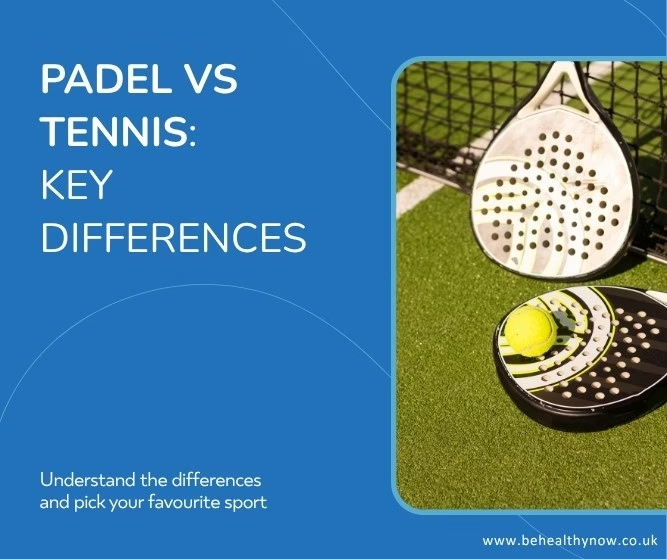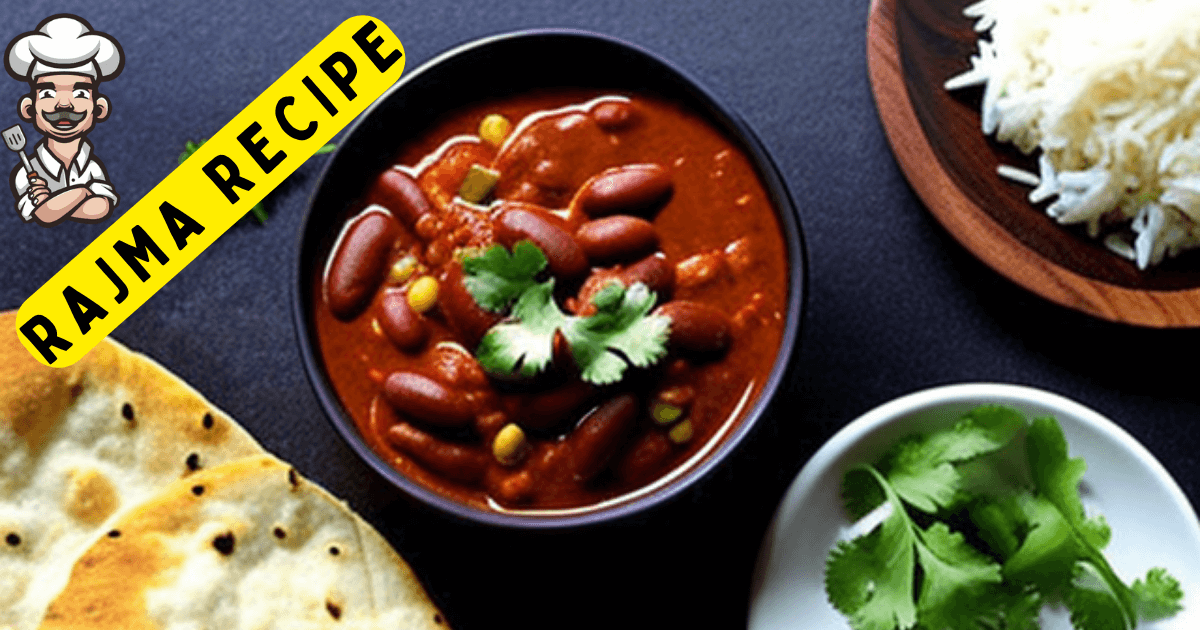
Padel and tennis are not the same sport. Padel is played on a smaller enclosed court with walls, while tennis is played on a larger open court. Different courts, different serves, different feel—simple as that.
Here’s a snapshot of how the two sports differ side by side.
Differences at a Glance
| What | Padel | Tennis |
|---|---|---|
| Court size | 10 × 20 m, enclosed by glass and/or mesh walls | 23.77 × 8.23 m (singles) / 10.97 m (doubles), no walls |
| Ball pressure | Same size/weight, lower pressure → softer bounce | Standard pressure → livelier bounce |
| Racket | Solid foam bat, no strings | Strung frame |
| Shoes | Deep herringbone or hybrid/omni tread for sand-turf | Soles vary for hard, clay, grass |
| Learning curve | Easier for beginners (small court, under-arm serve, doubles) | Steeper (bigger court, over-arm serve, power shots) |
Wait—How Did Padel Pop Up, Anyway?
It all started in 1969 when a Mexican businessman, Enrique Corcuera, squeezed a mini-tennis court into his backyard in Acapulco and boxed it in with walls so stray balls wouldn’t bother the neighbours.
A Spanish friend tried it, loved it, and shipped the idea home to Marbella. From there, the game spread through Spain, leapt to Argentina, and is now popping up everywhere—from health clubs to rooftop bars.

Those glass walls are the real twist. They keep the ball in play and double as giant backboards, so a shot that would be “out” in tennis can bounce right back into the rally.
Wondering how that changes the playing field? Let’s stack the padel court next to a tennis court and see what the numbers say.
Courts: Glass Box vs Open Court
A padel court is a neat 10 × 20 m rectangle wrapped in glass or mesh walls; a full tennis court stretches to 23.77 m long and 8.23 m wide for singles (10.97 m for doubles) with nothing but painted lines to hold the ball in.

The nets sit low in both sports, but padel’s drops a little farther—0.88 m at the centre versus tennis’s 0.914 m.
Why it matters:
- Movement: With about half the floor space, padel rallies rely on sharp side-steps and fast reflexes.
- Tactics: The walls act like giant backboards, so a ball that’s “out” in tennis can rebound straight back into play.
- Feel: Tennis rewards longer runs and heavier ground strokes; padel rewards anticipation and smart use of the glass.
Padel vs Tennis Balls: Pressure and Bounce
A padel ball is the same size and weight as a tennis ball (6.54–6.86 cm, 56–59 g), but it holds less air. That lower pressure changes the bounce you feel on court.
| Spec | Padel | Tennis |
|---|---|---|
| Internal pressure | 4.6–5.2 kg per 2.54 cm² (about 8 psi) | Typical pressurised ball ≈ 14 psi (matches the pressure in the sealed can) |
| Bounce test (drop from 2.54 m) |
135–145 cm | 135–147 cm |
What it means on court
- Lower pressure makes the padel ball lose speed faster—players say it “dies” sooner after the bounce.
- Slower bounce + smaller court = longer rallies for beginners and less chasing stray balls.
- In tennis, the livelier ball rewards power and topspin but can sail long more easily.
So, same fuzzy feel in your hand, but a softer core in padel changes the rally rhythm straight away.
Rackets: Padel Bat vs Tennis Racquet
A tennis racquet has a hollow frame strung with nylon or polyester. A padel bat is a solid, foam-filled paddle drilled with holes—no strings at all. That single swap changes the feel, swing, and even the grip you need.

| Feature | Padel Bat | Tennis Racquet |
|---|---|---|
| Build | 38 mm-thick, perforated face, foam core | Graphite/aluminium frame with a string bed |
| Typical weight | 355 – 375 g | 260 – 340 g (unstrung) |
| Grip length | Shorter handle—made for one-hand shots | Longer handle—room for two-hand backhands |
| Overgrips | Same tape you use on a tennis handle | Standard tennis overgrips |
| Starter price | From ≈ £30 for a Kuikma PR Open bat at Decathlon | From ≈ £30–£40 for a discounted Wilson Ultra Power XL at Decathlon |
What that means on court
- Feel: A strung racquet “pockets” the ball and snaps it forward, while a padel bat gives a flatter pop.
- Swing weight: Even though padel bats weigh slightly more on the scale, the shorter length makes them easy to whip in tight spaces.
- Grip tweaks: If the bat feels thin, wrap the same overgrip you’d use for tennis—no special tape needed.
- Cost: Beginner gear is similar, but pro-level frames and bats in both sports can climb past £200.
Shoes & Clothing: Padel vs Tennis Basics
Padel happens on synthetic grass dusted with sand; tennis can be clay, hard, or (less often) grass. Each surface asks the sole to do a slightly different job—bite, slide, or shrug off debris.
The quick table below lines up one padel model against two versions of the same tennis shoe so you can see, at a glance, how brands tweak the tread to match the court.
| Example shoe | Sport & court | Typical outsole | Why it matters |
|---|---|---|---|
| ASICS Gel-Padel Pro 5 | Padel (sand-turf) | Deep herringbone | Zig-zag grooves bite into the sand but still let you slide a little; sidewalls are reinforced for quick pushes off the glass. |
| ASICS Gel-Resolution 9 Clay | Tennis – clay | Full herringbone | Same zig-zag idea, just tighter. Lets clay escape so the sole doesn’t clog and you can slide safely into shots. |
| ASICS Gel-Resolution 9 Hard | Tennis – hard court | Hybrid pattern (shallower herringbone + flat zones) | Grips gritty paint without grabbing too hard; tougher rubber for concrete wear. |
Key terms, plain and simple
- Herringbone: V-shaped zig-zag that grips loose sand or clay yet still lets you slide.
- Omni / dot: Lots of small rubber dots—great on low-sand indoor turf; wears fast outdoors.
- Hybrid: Mix of patterns (zig-zag plus flatter areas) for all-court use.
- Lateral support: Stiff panels on the shoe’s sides that keep your ankle from rolling during sharp stops.
Can you swap shoes?
- Clay-court tennis shoes (deep herringbone) double as solid padel shoes for casual play.
- Hard-court tennis shoes often stick too much on sand-turf—fine in a pinch, but you‘ll feel the drag.
- If you play padel weekly, a padel-labelled pair (herringbone or hybrid sole) will slide and stop the way the sport expects.
Clothing
No worries here—both games run on the same kit: light, breathable top and shorts/skirt or leggings. Just pick moisture-wicking fabric and pockets big enough for a spare ball. No strict dress codes.
Serve & Rally
How the point starts
| Sport | Serve rule | Power feel |
|---|---|---|
| Padel | One under-arm serve, struck below the waist after a bounce | Softer launch, easy to return |
| Tennis | Up to two over-arm serves, hit out of the air | Fast first hit, often wins the point outright |
What keeps the ball alive
- Padel: after the first bounce the ball can hit any glass or mesh wall and still be played, so angles and rebounds matter.
- Tennis: no walls; once the ball lands outside the lines the rally ends.
Singles or doubles?
- Padel is doubles-only, so four players share a smaller space and teamwork rules.
- Tennis offers both singles and doubles, but club play is mostly singles.
How long the rally lasts
Bottom line: Padel’s softer serve, live walls, and doubles format create longer, more forgiving rallies, so beginners get more touches right away. Tennis points end faster and reward the first big strike, especially on faster surfaces.
How Do You Keep Score?
| Padel | Tennis | |
|---|---|---|
| Points | 0 – 15 – 30 – 40 – game (same as tennis) | 0 – 15 – 30 – 40 – game |
| Deuce rule | Golden point (first team to win the next rally takes the game) – used in most pro and club matches | Must win by two clear points (advantage–deuce loop) |
| Sets | Best of 3 sets. First to 6 games wins a set; 6-all = 7-point tie-break | Best of 3 (women) or 5 (men’s pro). First to 6 games wins a set; 6-all = tie-break (7-point or 10-point in a deciding set, depends on event) |
| Match format | Doubles only | Singles or doubles |
Quick tip: At deuce, the receiving pair in padel chooses which side will return the golden-point serve—adds a little strategy!
Learning Curve: Which Sport Is Easier?
Padel usually feels easier right away. The court is smaller, the serve is gentle, and the walls keep the ball from rolling away. Tennis takes more practice but lets you hit harder and use more kinds of shots once you get the hang of it.

Why Padel Feels Easier on Day One
| What | Padel | Tennis |
|---|---|---|
| Court size | 10 × 20 m – less ground to cover | 23.77 × 8.23 m (singles) – more running |
| Serve | One under-arm serve after a bounce | Up to two over-arm serves in the air |
| Walls | Ball can hit the glass and stay in play | Point ends outside the lines |
| First-day rally | Often 5–10 shots | Often 1–3 shots |
Where Tennis Pushes You Further
- More power & spin: Strings sling the ball faster and add heavy topspin—something a solid padel bat can’t match.
- Bigger court workout: Running down shots in singles builds extra speed and stamina.
- Wider shot menu: Drop-shots, kick serves, slices—the list of tricks is longer once you master the basics.
If you’re a tennis player trying padel
- Shorten your swing—there’s less room to wind up.
- Learn to use the back wall: sometimes it’s better to wait for the rebound.
- Get used to the low, under-arm serve rhythm.
Bottom line: Padel gives you quick rallies and easy fun on day one. Tennis asks for more practice but pays you back with bigger power and a wider range of shots. Pick the sport that matches how fast you want to improve and what kind of challenge you enjoy.
Injuries & Fitness: What Does Each Sport Do to Your Body?
Padel and tennis both count as solid exercise, but they stress your joints in different ways. Here’s a quick table showing the spots that usually feel it most, followed by calorie ranges and simple ways to stay ache-free.
| Body part | Padel | Tennis |
|---|---|---|
| Elbow & wrist | Can ache from mist-timed hits with the solid bat | “Tennis elbow” is common |
| Knees & ankles | Quick side-steps in a small court can strain joints | Hard stops on rough courts add impact |
| Shoulder & back | Low risk (serve is under-arm) | Big over-arm serves and heavy topspin load the shoulder and lower back |
Bottom line: padel tends to bother elbows and knees, while tennis adds extra strain on the shoulders and lower back.
Calorie burn (30-min, moderate play)
| Sport | kcal estimate* |
|---|---|
| Padel (doubles) | 240 – 320 |
| Tennis (singles) | 300 – 420 |
*Ranges from sports-science studies on club-level players.
Stay ache-free
- Warm up 5 min: light jog + arm and hip circles.
- Strength snack: planks for core, resistance-band pulls for elbows and shoulders.
- Fresh shoes: swap or rotate pairs every 6–9 months.
- Listen to pain: ice sore spots and rest a day if something nags.
Cost & Access: Courts & Gear
Padel is newer, so courts are harder to find and usually cost more to book than tennis. Here’s what you can expect in the UK, plus a quick glance at Spain—Europe’s padel hot-spot.
Court hire at a glance
| Hourly court hire (2025) | UK public/club Padel | UK public/club Tennis | Spain Padel |
|---|---|---|---|
| Off-peak (weekday day) | ~£28 – £40 per court (≈ £7 pp in doubles) | £0 – £12 per court* | €6 – €12 per court |
| Peak (eve / weekend) | £40 – £80; London privates can top £100 | £0 – £24 per court* | €12 – €20 (still cheaper than UK) |
*Many UK park courts are free or £2–£5 to book thanks to LTA “Barclays Free Park Tennis” and council programs; some let you just turn up and play
Most padel venues are pay-as-you-go, but many offer annual or monthly memberships that drop the hourly fee.
Starter-kit snapshot
| Item | Padel | Tennis |
|---|---|---|
| Entry bat / racquet | Kuikma PR Open – £29.99 | Artengo TR160 – £34.99 |
| Balls (tube of 3) | £6–£8 | £6–£8 |
| Shoes & kit | Same breathable kit; match outsole to court | Same breathable kit; match outsole to court |
A padel bat has no strings, so frequent players often replace it every 12–18 months; a tennis racquet can last for years with the odd re-string.
Where can you play?
- UK padel: ~ 900 courts at 300 venues and climbing; big chains like David Lloyd are adding dozens more.
- UK tennis: thousands of public courts—many in parks you can book for free or a few pounds.
- Spain padel: 22 000+ courts nationwide; high supply keeps prices low.
Bottom line: Gear costs are similar, but padel court fees run higher in the UK—at least until more courts open. Hunting off-peak slots, sharing the cost four ways, or joining a club membership can narrow the gap. Tennis still wins on sheer availability (and plenty of free park courts) if budget and convenience are top priorities.
Which Game Fits You? 5 Quick Questions
Ask yourself the yes/no questions below. Count how many times you answer “Yes” in each column, then check the quick verdict that follows.
| Question | Yes = Padel | Yes = Tennis |
|---|---|---|
| 1. Do you have easy access to padel courts nearby? | ✔︎ | |
| 2. Do you prefer playing doubles and a social vibe? | ✔︎ | |
| 3. Are you coming back from a shoulder or back injury? | ✔︎ (softer serve, no overheads) | |
| 4. Do you enjoy solo practice or one-on-one matches? | ✔︎ | |
| 5. Is a bigger shot variety and power game what excites you? | ✔︎ |
How to read it
- Mostly left-side “Yes” answers: Start with padel. You’ll rally sooner, play in pairs, and save your shoulders.
- Mostly right-side “Yes” answers: Go for tennis. You’ll get the full singles experience, bigger power, and more court choices.
- Split down the middle? Try both. Your local club may even offer a taster session for each sport on the same day.
Your Move
Padel means quick rallies and easy doubles; tennis means bigger courts and more power shots. Try the one that feels right—or test both and see which one makes you grin.
Sources:
International Padel Federation: Padel Balls FIP Approved
ITF APPROVED TENNIS BALLS, CLASSIFIED SURFACES & RECOGNISED COURTS
https://www.wilson.com/en-us/product/pro-staff-97-v14-frm-wr12570
https://www.decathlon.co.uk/p/adult-tennis-racket-tr500-lite-green/_/R-p-300412
https://www.decathlon.co.uk/p/adult-padel-racket-blue-pr-open-racket/_/R-p-327586
https://www.decathlon.co.uk/sports/tennis/tennis-rackets
https://www.squashfacilities.com/post/lta-unveils-latest-figures-on-growth-of-padel-in-britain
https://www.padel-magazine.co.uk/
https://ukpadel.org/
Hi, I am Harry a food blogger. I like to experiment with recipes and love to share with you. A knack for turning everyday meals into extraordinary culinary adventures! From discovering hidden gems in local eateries to whipping up mouthwatering recipes at home, I share a love for all things delicious. Join my journey as they explore flavors, experiment with ingredients, and bring the joy of food to life, one bite at a time!” @mytyperecipes


![How Long Does It Take To Recover From Tennis Elbow in 2025 [Video] Recover From Tennis Elbow](https://mytyperecipes.com/wp-content/uploads/2025/02/How-to-Prevent-Tennis-Elbow-150x150.avif)


